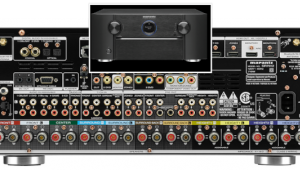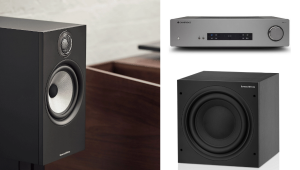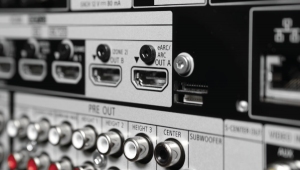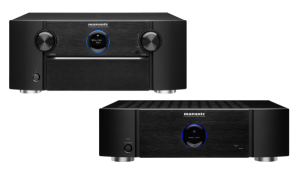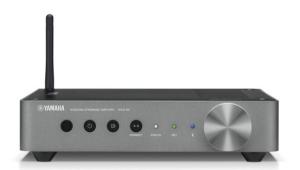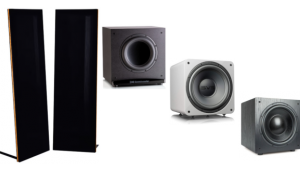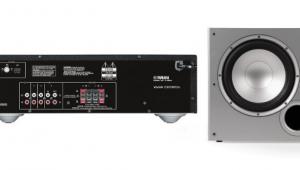Primary Colors, Bi-Amping, DVRs

I've heard you talk about Sharp's new RGBY color system, and it started me thinking about something. I have always thought that red, blue, and yellow are the primary colors, and these colors can create any color there is. So why do TVs use RGB?
Ben Howe
Great question! Red, green, and blue are the primary colors for media that emit light, such as TVs, and combining them creates new colors in an additive mannerif you combine all three in equal amounts, you get white, as shown on the left in the diagram above. By contrast, red, yellow, and blue are the primary colors for media that reflect light, such as paint and ink, and combining these colors together in various amounts creates new colors in a subtractive mannerif you combine all three in equal amounts, you get black, as shown on the right.
BTW, printers often use cyan, magenta, and yellowCMYas the primary colors, which also combine subtractively when printed. And no set of primary colors can be combined to create any color there isthey can only create a subset of all visible colors.
Extra points to anyone who knows what I'm referring to in the title here. (Hint: I just cleaned out the house in which I was raised and found some interesting childhood relics.)
Bi-Amp Blues
I have a Denon AVR-4308CI receiver and Paradigm Studio 20 speakers. I can bi-amp the front left and right speakers with my current receiver, but I am one channel short for bi-amping my center Paradigm Studio CC-590. What's the best way to bi-amp the center? I was thinking of using the pre-out to a mono amp for the extra channel I need. Do I need to match the wattage with my receiver?
Mike Ballard
If you want to bi-amp the center channel, I think it would be better to split the pre-out from the receiver with a "Y" adaptor and send it to a 2-channel amp, which would then drive both inputs of the center speaker. That way, the two amp channels would be matched in power and tonal characteristics as they are for the front left and right. I would get an amp with at least as much power per channel as the Denon offers, because the center channel does most of the work on movie soundtracks.
However, I question the value of bi-amping in the first place. As Tom Norton explains, "In the pro world, bi-amping implies a direct amp feed to each driver with electronic crossovers in front of the amps. But in the audiophile world, more often than not it means using the bi-wire/bi-amp input terminals of the speakers with a separate amp feeding each one. That means the speaker's passive crossovers remain in the circuit.
"You are obviously using the audiophile approach for bi-ampinga pair of full-range amp channels driving the two terminals of each speakerso it's possible you are gaining little by using bi-amplification. One way to check this would be to reconfigure the system to use just one amp channel to drive each speaker in the conventional mode. Does the system sound better? Worse? The same? I would suspect the latter, though without hearing the specific system, it's hard to say."
Adventures in DVR Land
We have Cox cable, and I want to get my wife a DVR to record TV shows to watch on our Sony HDTV. What is best one to buy?
Robert Abel
I assume that Cox offers a DVR of its own, which combines a cable tuneroften more than oneand DVR in one box. That's probably the most convenient solution, so I'd check with them about how much that costs.
Otherwise, I recommend the TiVo and Moxi DVRs. I have the TiVo Series3, which I love, and Home Theater Editor Shane Buettner gave the Moxi a glowing review. There's also the newer TiVo Premier (aka Series4), which David Vaughn is currently reviewing for HT. All of these require a CableCard to work with digital cable, which precludes PPV and on-demand content. As an alternative, you might be able to use them in conjunction with a separate cable box, but that would involve IR blasters and such, making this approach a kludge.
Let's look at how TiVo and Moxi differ. Moxi works only with digital cable, while TiVo also includes ATSC tuners for over-the-air terrestrial broadcasts. In addition, TiVo offers access to online streaming content, but Moxi does not. On the other hand, TiVo charges a fee for its electronic program guide (monthly or one "lifetime" payment), while Moxi does not. Thus, TiVo is a more expensive proposition, but it provides access to more sources of content.
According to David Vaughn, the TiVo Premier he's reviewing is a beta unit, which has some problems. For example, the new user interface is poisonously slow to respond to commands, though you can enable the older UI, which is lighting fast. His review is pending a firmware update to address this issue. On the upside, the higher-capacity TiVo Premier XL includes THX Optimizer, which lets you optimize the TV's basic picture controls for the box, a rare and very welcome feature in my book.
If you have a home-theater question, please send it to scott.wilkinson@sorc.com.
